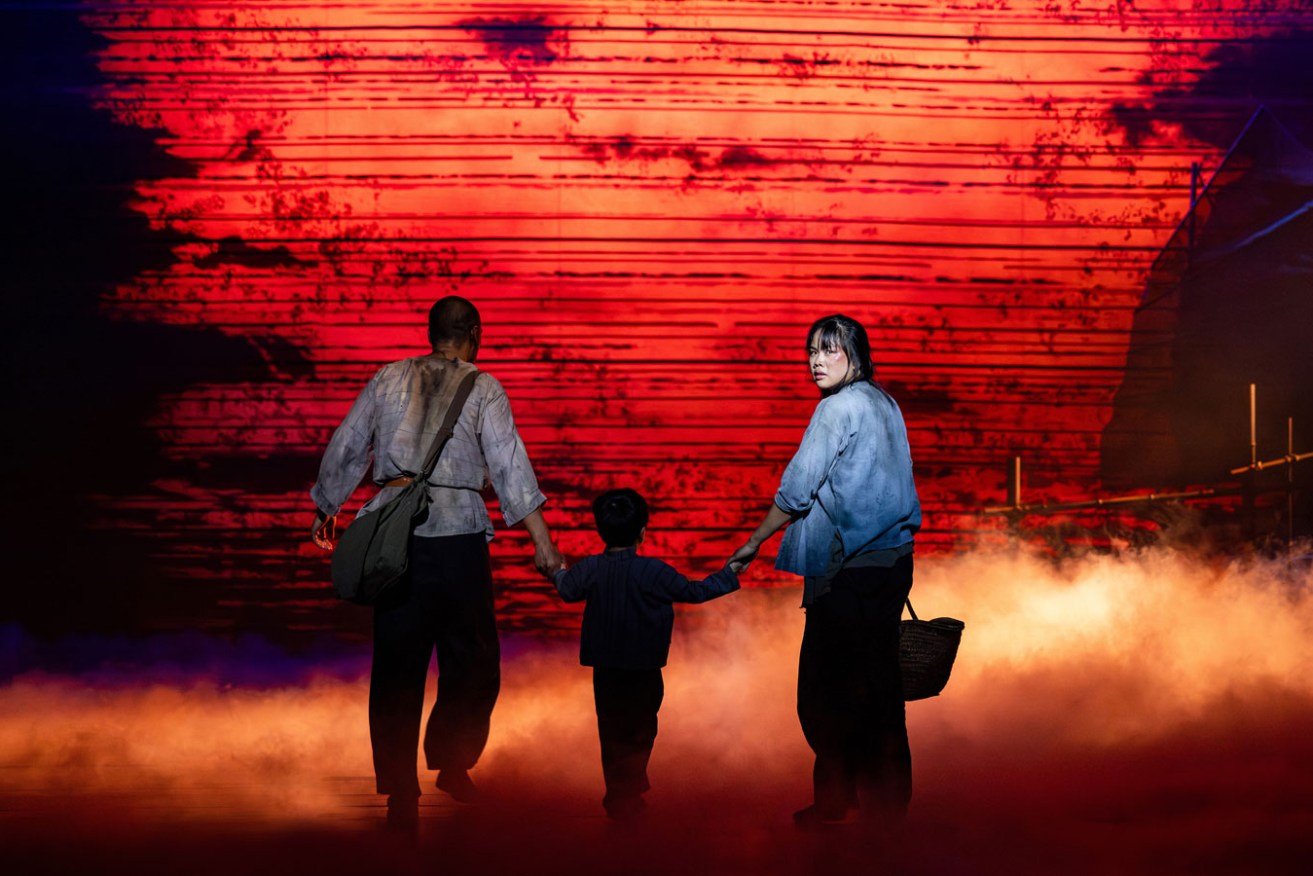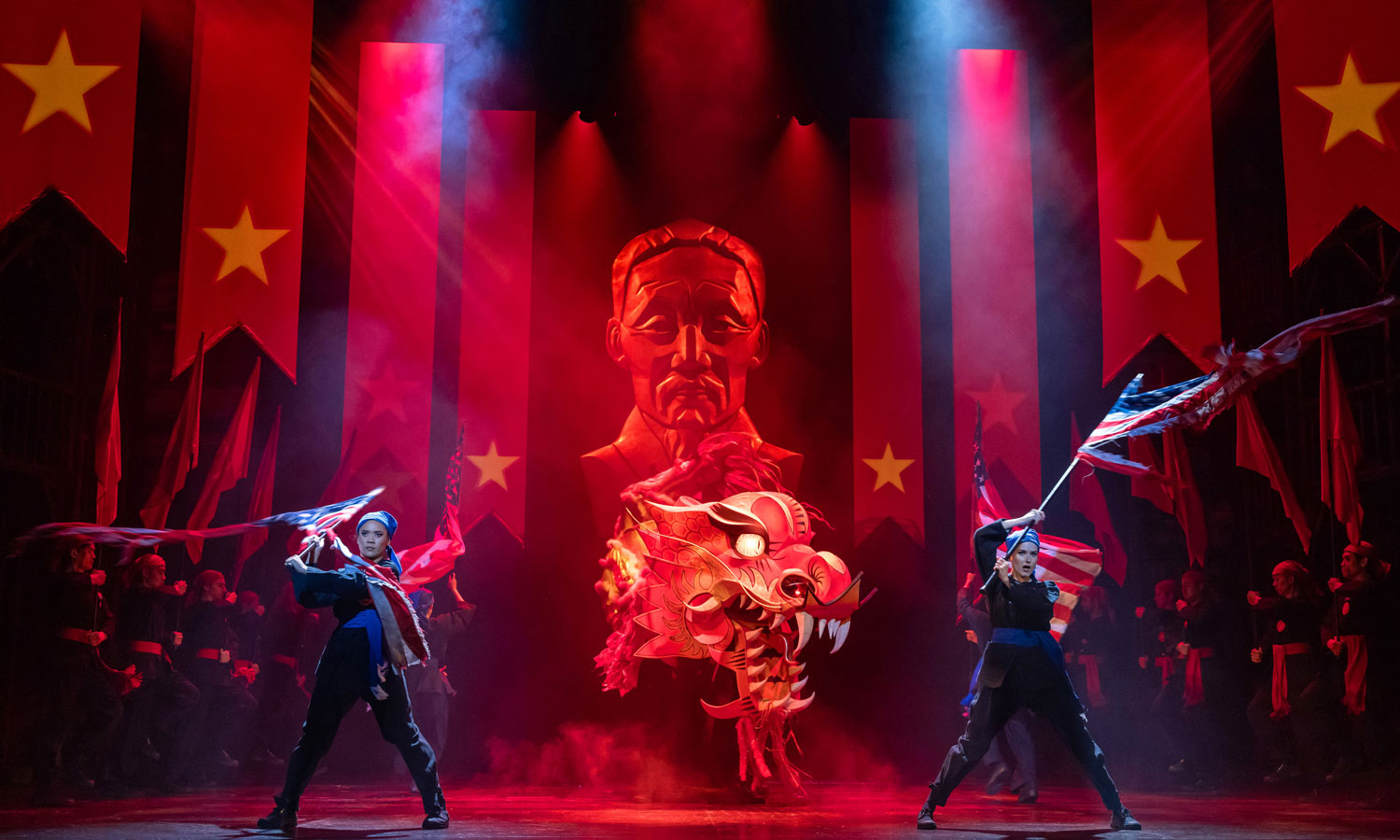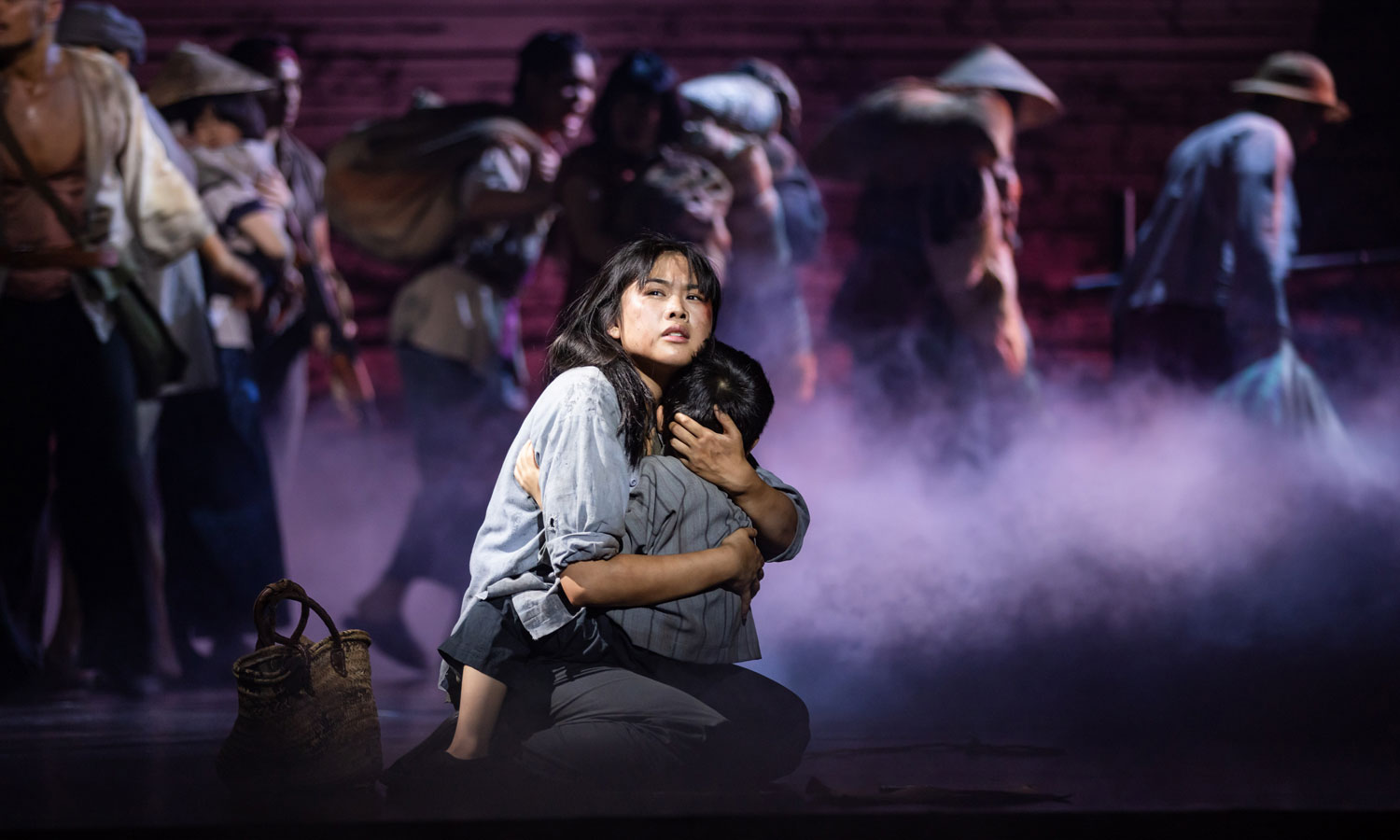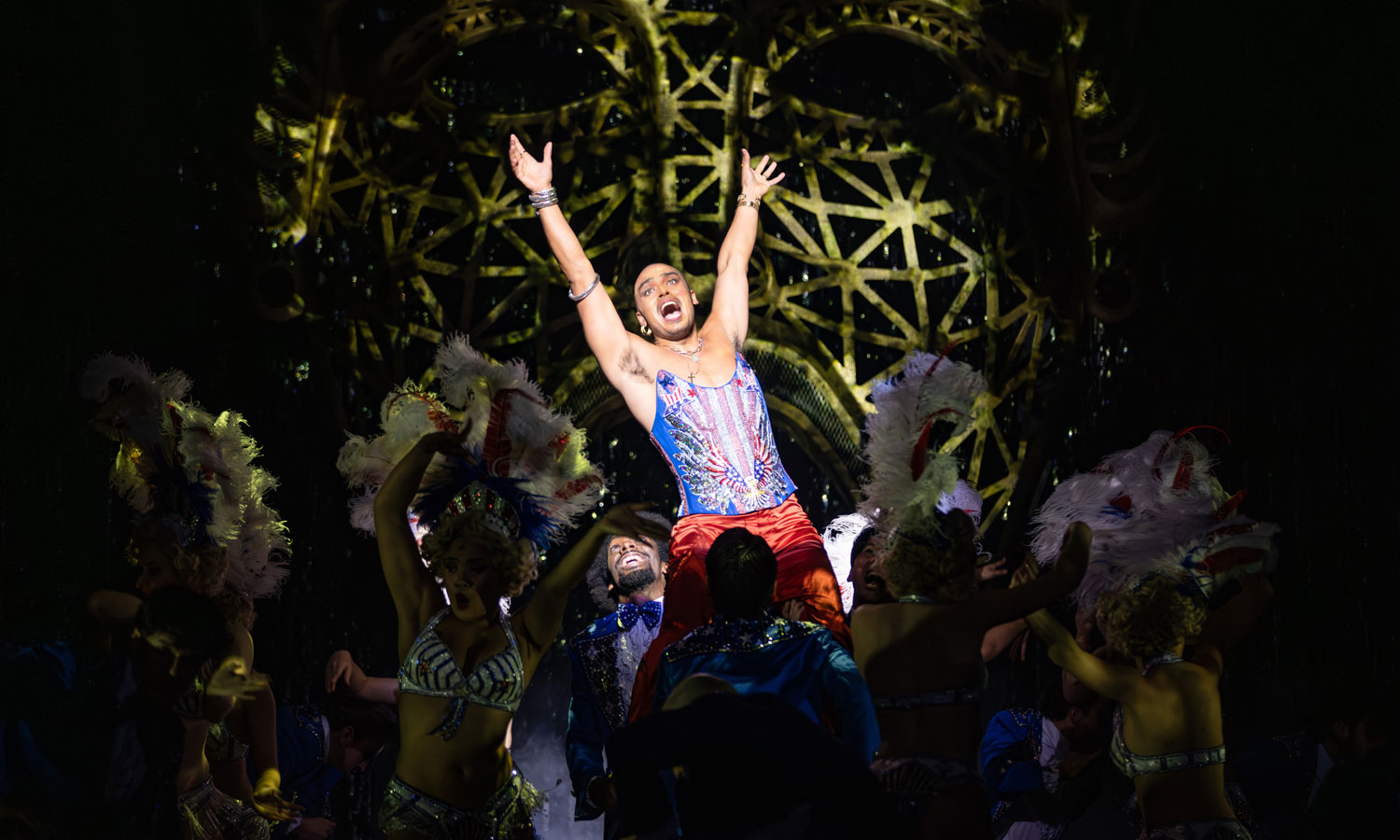Musical review: Miss Saigon
Miss Saigon has landed in Adelaide once again. This now classic musical is well served with a splendid production more spectacular, captivating and accomplished than ever.


Miss Saigon: The spectacle of the musical is contrasted with reflective numbers. Photo: Daniel Boud / supplied
The return to Adelaide of Miss Saigon is a significant event for many reasons. It was first seen here in 1995 and then in 2007, and we are seeing the London revival from 2014, a further 10 years on.
When Miss Saigon premiered in 1989, it marked the end of an unprecedented decade for producer Cameron Mackintosh. He transformed an artform previously tethered to New York and London – or, more precisely, Broadway and the West End – into an eyewateringly lucrative global experience.
The 1980s were golden for Mackintosh and the musical, starting with Andrew Lloyd Webber’s Cats and later The Phantom of the Opera. In between was Les Misérables. When Mackintosh approached composers Claude-Michel Schönberg and Alain Boublil to make a stage production of their concept album, he opened another motherlode. Les Mis became the longest-running musical ever in the UK (and many other places) and it led the way for another thematically and historically ambitious, meandering and massive, sometimes musically overwrought, stage work – Miss Saigon.
Based on Puccini’s 1904 opera Madame Butterfly – about a doomed relationship between a US naval officer and a young geisha in Nagasaki, Japan – Miss Saigon is set 70 years later in the chaos of the failing American military campaign against Ho Chi Minh and the Viet Cong in Vietnam.
Sergeant Chris Scott, through a fellow marine, John Thomas, is drawn into the wild and seedy bar and escort scene that is R and R for soldiers in Saigon. There he meets Kim, a young village girl orphaned by the war and plunged into the grim and dangerous life of a sex worker for an invading army.
From the rise of the curtain, Miss Saigon is a blast. And this production establishes its credentials as being even better than its predecessors.
“Backstage Dreamland” and “The Heat is on in Saigon” introduce the main characters, especially The Engineer, the sinister Vietnamese intermediary, pimp, hustler and perpetual opportunist seeking to broker chances out of suffering, and advantage out of chaos. We meet Chris and Kim and Gigi, the bargirl who has seen it all but can still find kindness. It is a stereotype but a much-needed attribute in this grim narrative.

Lighting and stage design is a highlight of this production of Miss Saigon. Photo: Daniel Boud
Superbly lit by the well-named Bruno Poet, the set created by Totie Driver and Matt Kinley (based on the original design of Adrian Vaux) brings detail to the ramshackle lives of people whose country has been ransacked by war. The flimsy wooden balconies on each side of the stage provide for energised movement and, as in West Side Story, elevation for the plangent solos and declarations of love and hope from Kim and Chris, and others, as the tale unfurls.
The Australian tour stage director, Jean-Pierre van der Spuy, skilfully captures and expands on Laurence Connor’s 2014 revival plan, as the large cast set-pieces brim with choreographic dazzle and energy, animated by lighting and the crisp orchestrations by the late William David Brohn. Musical director Geoffrey Castles and his 15 musicians drive the shifting emotions of the drama with admirable precision and nuance. This production is thrillingly well-integrated. It doesn’t even pause to blink.
But the spectacle, culminating in the famously stunning helicopter sequence of the military retreat from Saigon, is contrasted with reflective numbers – Gigi, Kim and the other women singing “The Movie in My Mind”, Chris’s plaintive “Why God Why?” and the lyrical simplicity of the Chris and Kim duet, “Sun and Moon”.

Abigail Adriano is superb in the role of Kim. Photo: Daniel Boud
The performers are, without exception, outstanding. Lewis Francis, as John, adroitly moves from the careless soldier in Act I to the remorseful veteran organising the Bui Doi support and repatriation scheme in the US, assisting and supporting orphaned and abandoned war children. As the villain, Thuy (the aggrieved fiancé previously betrothed by arranged child marriage to Kim), Laurence Mossman brings a recurrent sense of menace and doom to Kim’s plans for freedom for herself and her young son, Tam.
Kerrie Anne Greenland, as Chris’s American wife Ellen, brings a stillness and emotional clarity to her portrayal, especially in her solo “Maybe”. Kimberley Hodgson, as Gigi, is also excellent, especially in her wistful rendering of “The Movie in my Mind”.
In the mercurial and Mephistophelean role of The Engineer, Seann Miley Moore dominates the stage with an erotic, hip-hop dynamism which invigorates this updated production. Like a punk Iago, his manoeuvrings are both depraved and darkly thrilling. He bursts open late in the story with the extended cameo, “The American Dream”. Dressed like Elvis with a blond wig and a Stetson, he is declaring his reptilian credentials for the land of American free enterprise. A Cadillac appears through the cruel maw of the Statue of Liberty. It is phantasmagoric satire and Moore provides even more.

Seann Miley Moore dominates the stage as The Engineer. Photo: Daniel Boud
In the other lead roles, Nigel Huckle as Chris is both ingenue soldier and, after the war, a veteran anguished and besieged by regret. His scenes with Kim, which carry the emotional heft of the production, are excellent. His singing, from tenor to high tenor, carries the story beyond melodrama and cliché whether in “Why God Why?” or “Last Night of the World”.
And as Kim, Abigail Adriano is superb. From her faultless, expressive singing in “The Wedding Ceremony” and her reprise of “This is the Hour” to her whole demeanour as Kim, she is key to the success of the production. Unlike Butterfly in Puccini’s opera, she has agency and defiant courage. From her demure entrance to her tragic final scene, she is vivid and credible in what could have been a sorry tale of schlock and warmed-over misogynist sentiment. Her scenes with the pensive Michael Nguyen Chang as her small son Tam also deserve mention.
Adriano is a triumph and she is held high by a cast and crew, by musicians, dancers and designers, who collectively, and without exception, make this terrific production a memorable one.
Miss Saigon is a Cameron Mackintosh, GWB Entertainment and Opera Australia presentation. It plays at the Festival Theatre until January 28.
This article is republished from InReview under a Creative Commons licence. Read the original article.
InReview is an open access, non-profit arts and culture journalism project. Readers can support our work with a donation. Subscribe to InReview’s free weekly newsletter here.




